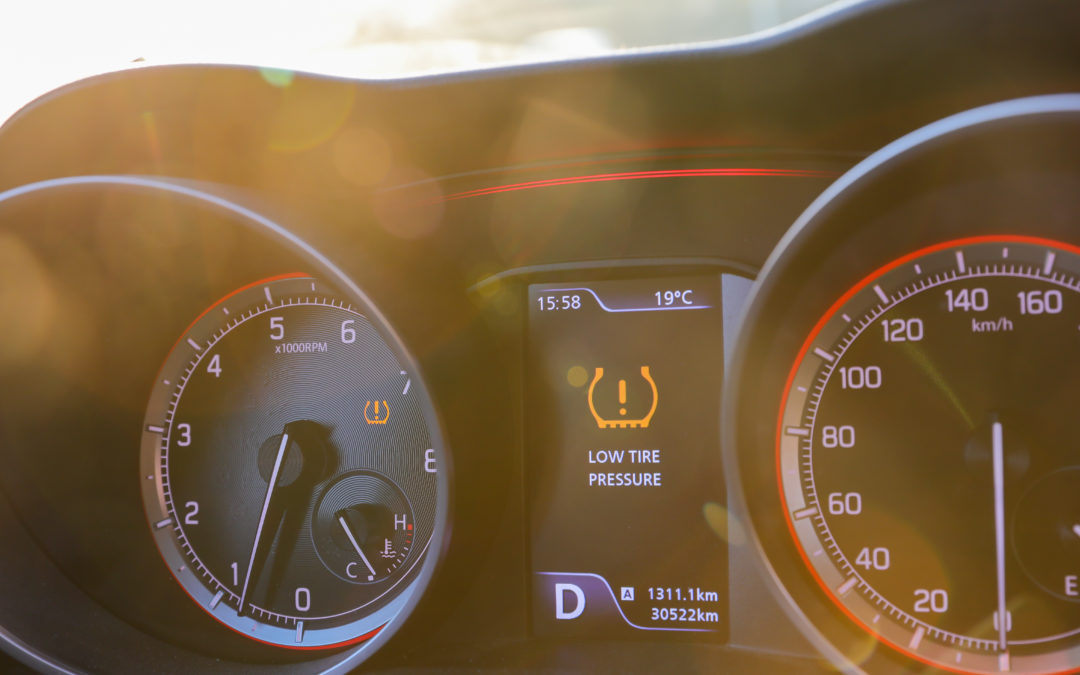With the cooler temps on the rise, you may notice that your tires visually appear to be somewhat deflated, or your tire pressure monitoring system (TPMS) displays the tire pressure warning light. Before you panic, keep in mind that it is normal for air pressure within your tires to drop when the temperatures goes down. This is especially noticeable in the early fall when the warm daytime temperatures change to much cooler temperatures at night. In this blog, we review important considerations for keeping your tires inflated at factory values to ensure safe driving.
Why Does Air Pressure Change with Temperature Differences?
The reason that your tire pressure changes is because the air inside the tire is condensed with the cold air and takes up less space, therefore dropping the air pressure. Lower temperatures result in lower pressure, and tires become underinflated. The opposite of this is true during warmer temperatures. Higher temperatures equate to higher pressure, and tires become overinflated.
How to Handle a TPMS Warning Light
If you get into your vehicle and the TPMS warning light appears, all you may need to do is begin to drive. As you drive, the friction creates heat, and your tires are warmed and the condensed air fills more of the space. However, in most circumstances when you see the warning light, you will want to address the air pressure. Most likely the pressure is off, and needs to be addressed.
- Always check with your specific tire manufacturer for the proper pressure of your size and type of tire. This will ensure that you inflate your tires to a safe level for different driving conditions and temperatures.
- Inflate your tires to the appropriate pressure and re-check your TPMS. If you have reached the proper pressure, the warning light should be extinguished.
- If you have the system that indicates the specific pressure and tire, make sure all four tires are properly inflated.
What Happens if the Warning Light Does Not Extinguish?
If you have inflated your tire(s) and the TPMS does not extinguish, this may be an indication of an air leak, damage, or a malfunction with your TPMS. Sometimes it may take driving a few miles before it resets on its own.
- Sometimes the TPMS warning may not reset. A reset is always required when your tires are rotated, to ensure that the system is working properly. Consult with your owner’s manual about how to manually reset the TPMS for your specific vehicle make and model.
- If you suspect a leak and you are driving, pull over to a safe area off the road to visually inspect your tire(s). Look for any foreign debris such as metal, nails, screws, or other objects that may have impacted the treads or the sidewalls. Look for any noticeable cracks or gaps in the tire. If you feel there is a problem, change the tire or contact roadside assistance.
If you have any concerns about your tires or would like to have the TPMS inspected by a service professional, give us a call at Campus Repair. We can inspect your tires and take care of any repairs or a reset of your TPMS. Stay safe this fall and keep an eye on your tire pressure.

